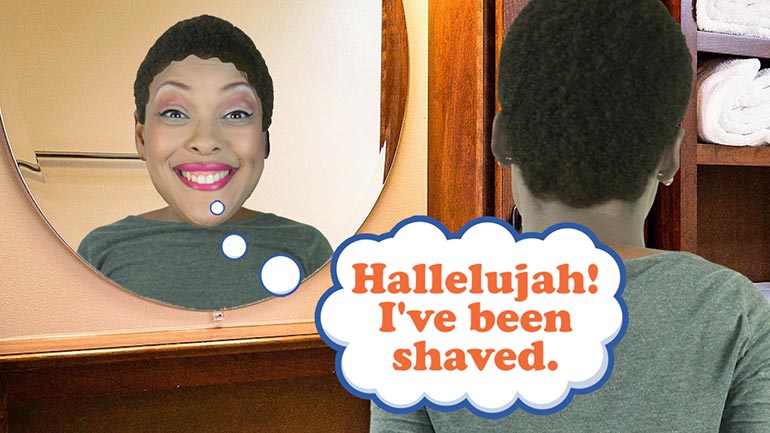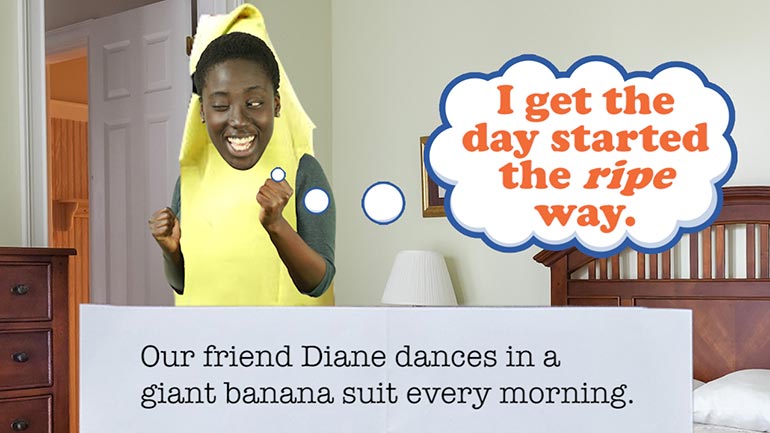ShmoopTube
Where Monty Python meets your 10th grade teacher.
Search Thousands of Shmoop Videos
Science 4: Transverse and Longitudinal waves 79 Views
Share It!
Description:
Today we're talking about disturbances. Frankly, we're pretty disturbed by Twinkies. How do they get so...spongy? Right? Oh, but today's disturbances are waves. That's what this lesson is about anyway. Hopefully those don't disturb you personally.
Transcript
- 00:03
[Dino and Coop singing]
- 00:13
There are all sorts of waves out there in the world. [Girl waving]
- 00:16
From the huge waves that crash onto the beach… [Wave crashing into rocks]
- 00:17
…to the more modest waves that move through this dude's Slinky… [Man playing with his slinky]
- 00:21
He probably should have brought more books and fewer Slinkys.
Full Transcript
- 00:24
Just sayin'.
- 00:25
For all that variety, all the waves we see in the world can be classified as one of two [Examples of different waves shown]
- 00:28
types: transverse waves, or longitudinal waves.
- 00:32
To figure out the difference between these two types of waves, we'll need to take a detour [Man on a boat going past a math detour sign]
- 00:36
into some pretty math-y concepts.
- 00:38
But hey, at least math is better than being shipwrecked! [The boat then goes off a waterfall]
- 00:41
To most people, that is. [Man looking happy he is stranded rather than having to do maths]
- 00:43
At its most basic, a wave is a disturbance that moves through an object. [Coop pointing at a blackboard]
- 00:47
That wave will be moving in a certain direction, and we call that direction the direction of
- 00:50
propagation.
- 00:51
Not to be confused with the "direction of Bob Agasion," which is just the direction [Bob Agasion walking down the street]
- 00:55
some guy named Bob is walking.
- 00:57
Hey, Bob.
- 00:58
Anyway, it turns out that different waves travel differently in relation to the direction [Dino pointing at a blackboard]
- 01:02
of propagation…
- 01:03
…and that's where math comes into the picture!
- 01:05
As you might recall, two lines are perpendicular if they meet at a 90-degree angle. [Demonstration of a perpendicular angle]
- 01:10
On the other hand, two lines are parallel if they're on the same plane, but never meet.
- 01:14
That is, if they're on the same geometric plane…
- 01:16
…not the same transatlantic flight, where they happen to be seated across the cabin [Aeroplane in the sky]
- 01:20
from each other.
- 01:21
So what do these kinds of lines have to do with waves?
- 01:24
Well, let's use a Slinky to find out!
- 01:26
If we attach one end of the Slinky to the doorknob, and wave the other end of the Slinky up and [Person making a wave with a Slinky]
- 01:30
down, we start making waves.
- 01:32
Those waves move towards the doorknob.
- 01:35
That means the direction of propagation is towards the doorknob! [Arrow shows the direction of propagation]
- 01:38
But what are the waves up to?
- 01:40
If we pay close attention to the movement of the Slinky, we see that it's moving up
- 01:44
and down.
- 01:45
In other words, perpendicular to the direction of propagation.
- 01:48
When a wave vibrates at right angles to its direction of propagation, we call it a transverse wave. [Coop pointing at a blackboard]
- 01:54
That's exactly what we've got here.
- 01:56
Now, let's say we change things up a little bit.
- 01:58
We keep one end of our Slinky attached to the doorknob, but instead of moving the other
- 02:02
end up and down, we move it forwards and backwards, towards and away from the doorknob. [Person moving the Slinky]
- 02:08
Our direction of propagation's the same…
- 02:10
…but this time, instead of moving up and down, the Slinky's moving forwards and backwards:
- 02:15
parallel to the direction of propagation.
- 02:17
When a wave vibrates parallel to its direction of propagation, we call it a longitudinal wave. [Dino pointing at a blackboard]
- 02:22
Same Slinky, different kind of wave.
- 02:24
Phew!
- 02:25
We've figured out how to identify transverse and longitudinal waves, and all thanks to
- 02:28
the humble Slinky. [Guy mad about Slinky toys]
- 02:30
See?
- 02:31
Maybe that shipwrecked guy had the right idea!
- 02:32
Aw…look at him waving at us….hi, buddy! [Guy being surrounded by sharks waving for help]
- 02:35
What a friendly guy! [Big shark jumps out the water]
Up Next
Sticks and stones, right? Well...only sometimes. It's a good idea to make sure your words aren't going to hurt others. Let's look at some ways to d...
Related Videos
Learn to debate like a champ. It's way better than debating like a chimp. That just takes mudslinging to a whole new level.
Today we'll learn about biographies and autobiographies. And no, the second one has nothing to do with the lives of cars.
In this lesson we'll subject you to some verbs and predicates. Each one is a necessary part of a complete breakfas—er...sentence.
Choosing words carefully is important. You may end up vexing the assemblage of citizens you're conversing with...or you might even just plain bore...




